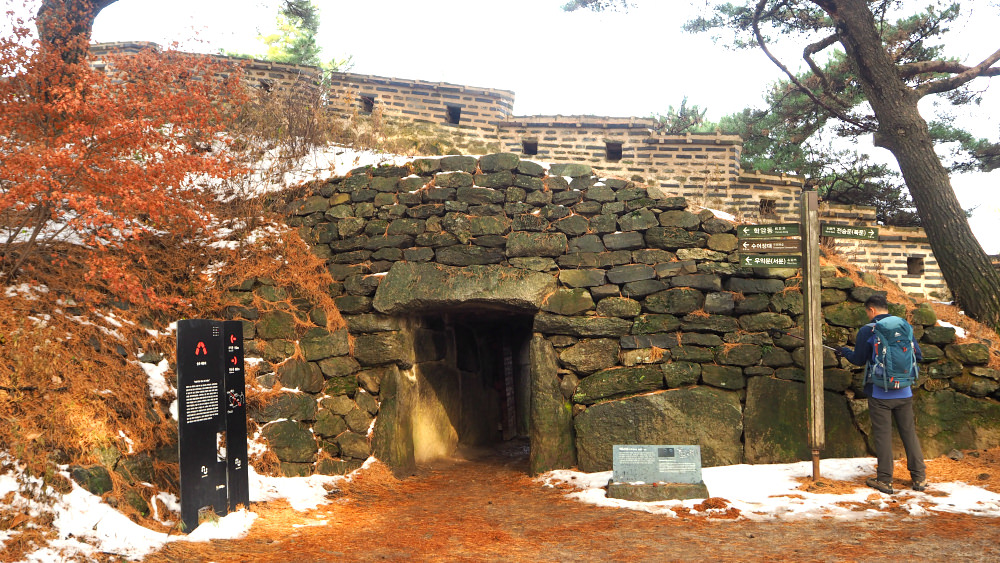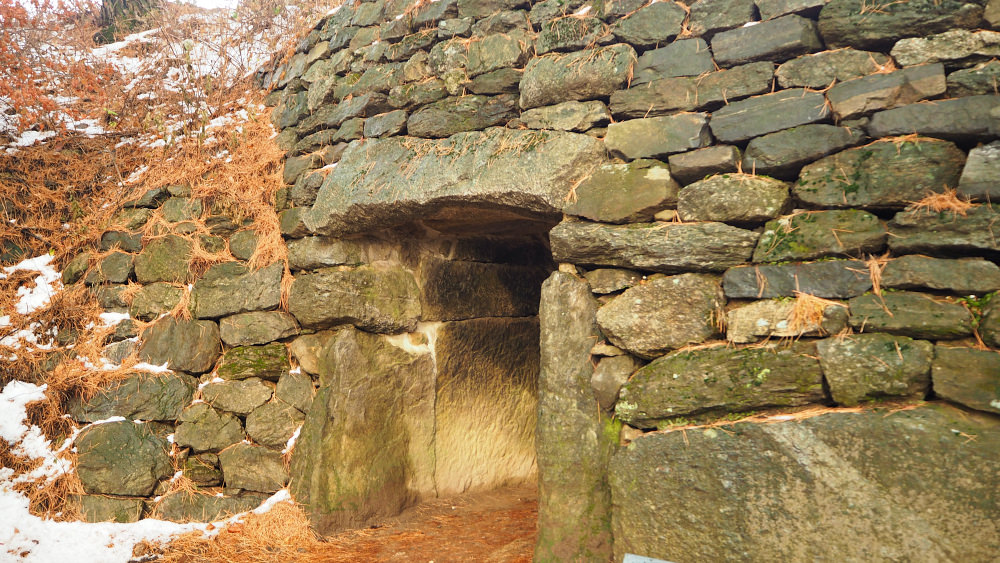Namhan Sanseong West Gate
 Namhansanseong West Gate (Namhan Mountain Fortress)
Namhansanseong West Gate (Namhan Mountain Fortress)namham sanseong west gate
Namhansanseong is a UNESCO World Heritage Site in Gyeonggi Province, South Korea. It is a mountain fortress that served as a strategic military point during the Joseon Dynasty.
The fortress was built in the 17th century to defend against the Sino-Manchurian invaders. Today, the fortress is a testament to Korea's rich cultural heritage and attracts many visitors annually.
The Namhan Sanseong West Gate, one of the four existing gates, is a prominent feature of the fortress. It has played a crucial role in protecting Hanyang, the old name for Seoul, against the attacks from Sino-Manchurian invaders.
In this article, we will explore the Namhansanseong West Gate in more detail and closely examine its history and significance.
I hiked from the rotary of this UNESCO World Heritage enlisted site to the West Gate during my second trip and hike. It snowed the other day, and you can imagine how the walls and surrounding of the fortress look like.
 Namhan Mountain Fortress front view (from the inside)
Namhan Mountain Fortress front view (from the inside) Namhansanseong West Gate (outside view)
Namhansanseong West Gate (outside view) Side view of Namhansanseong West Gate
Side view of Namhansanseong West Gate Outside view of Namhan Mountain Fortress West Gate
Outside view of Namhan Mountain Fortress West GateTo get to this gate, you have many possibilities of routes to take depending on your choice.
One of the below is one of them…
- From the Rotary—South Gate—Yeongwoljeong—Sungyeoljeon—West Gate then return to the Rotary if you took the bus (#9). This course could take about an hour but easy hike.
- From the Rotary—North Gate—West Gate then return to the Rotary. Although this route sounds easy, the hike is a little bit difficult because of the steep ascension level.
- From the entrance of Namhansanseong Fortress—South Gate—West Gate.
The above route is good for physically fit hikers. You need to hike or climb a steep ascension level for about thirty minutes to reach the South Gate.
If you want an easy hike or have little kids (ages around seven and above), you may want to take the longer one (the first route).
The good thing about taking the first one is because you can see a lot of historical sites or points along the way. Some of the significant, interesting historical points are described (with photos) below.
 Ammun 5 (Hidden Gate 5)
Ammun 5 (Hidden Gate 5)Ammun 5 Hidden Gate
"A number of hidden gates were built around Namhansanseong (Namhan Mountain Fortress) in hard-to-observe, and there were small and virtually indistinguishable to the enemy. This gate was for access to the Yeongjubongongseong (double-layered fortified walls. The inner side of the gate featured a long stone wall so that the gate could be sealed for protection when the fortress was in use".
 Closer view of the stones of Gate #5
Closer view of the stones of Gate #5 Ammun 6 (Hidden Gate 6)
Ammun 6 (Hidden Gate 6)Ammun 6 (Hidden Gate 6)
"Hidden gates were located in areas the enemy forces had difficulty observing. The entrances were small and hard to distinguish from the rest of the fortress.
This gate served as a sentry post facing the northwest. It was set up somewhat like a battlement to serve defensive purposes for the northwest portion of the fortress. On January 23, 1637, the gate served to repel a Manchu attack in the middle of the night".
 Outside view of Hidden Gate 6
Outside view of Hidden Gate 6Byeonggamnamseongsinsubi (Inscribed Stele)
"This stele written by the Royal Guard Seo Myeonggeung, details the restoration of Namhan Sanseong West Gate (Namhan Mountain Fortress) during an 8-week period in the summer of 1779.
Mr Lee Myonggung supervised finances and construction, and the record includes the names of 18 directors of each of the 18 sections which were restored".
The stele is on your right hand side when going to the West Gate from the South Gate as your route.
 Byeonggamnamseongsinsubi (Inscribed Stele)
Byeonggamnamseongsinsubi (Inscribed Stele)Getting to Namhan sanseong West Gate
First, you need to get to Sanseong Subway Station. If that is the mode of transport, you wish to take.
- Take Seoul Subway Line 8, then alight from Exit 2.
- Take Bus numbers 9 or 9-1, then get off at the Rotary of Namhansanseong Bus Stop.
If you want to start your hike from the South Gate, directly head towards the Parking Area and pass through the gate and you will see the gate.
If you decide to take a bus from Seoul to Namhansanseong Fortress (for Namhansanseong West Gate), proceed to Gangbyeon Station (Seoul Subway Line 2)…
- Take Bus number 13-2
- Then transfer to Bus 15-1 at the entrance of Namhansanseong Fortress.
- Then get off at the bust last stop where the fortress is.
To learn more about Namhansanseong Fortress, please read the page. This page only serves as an extension of that page with more photos of Namhansanseong West Gate.
Thanks for visiting this page. Hope you have a safe and exciting trip.
- Home
- Backpacking Guide
- Namhan Sanseong West Gate
Get Exciting Activities
Book one of our exciting activities today to experience the thrill of a lifetime! Take advantage of this opportunity and secure your spot in advance.
Hotel Map Guide
Find your affordable, accessible, and comfortable hotel in Seoul at Agoda.Com. See the hotel map below...
Hotel Booking Guide
Find affordable and amazing hotels on Agoda.com using the search box below. Book now to enjoy great discounts and save!







New! Comments
What do you think about this page? Leave me a comment in the box below.